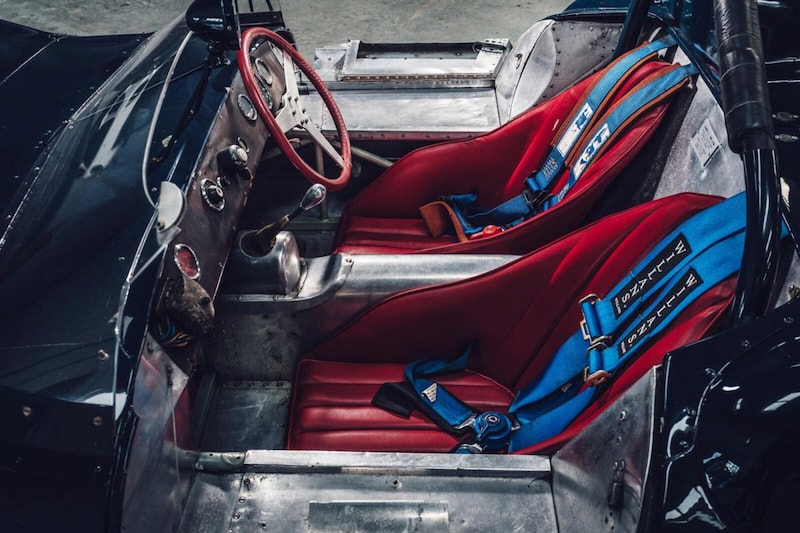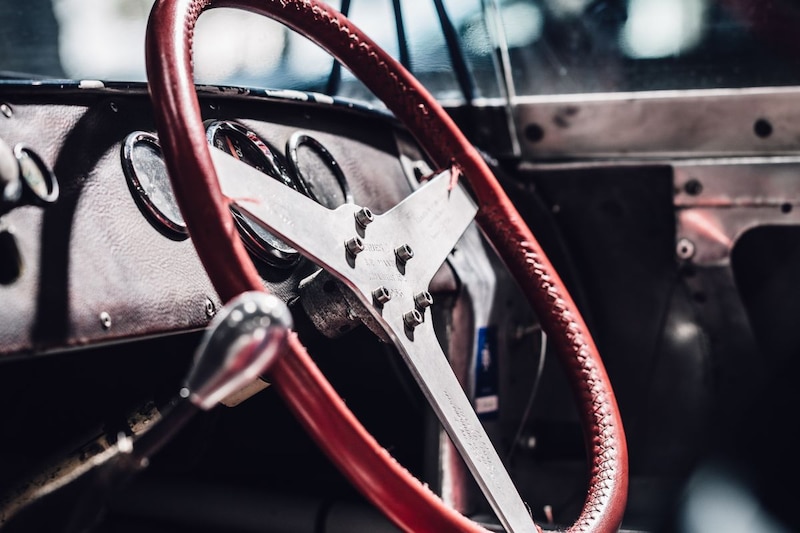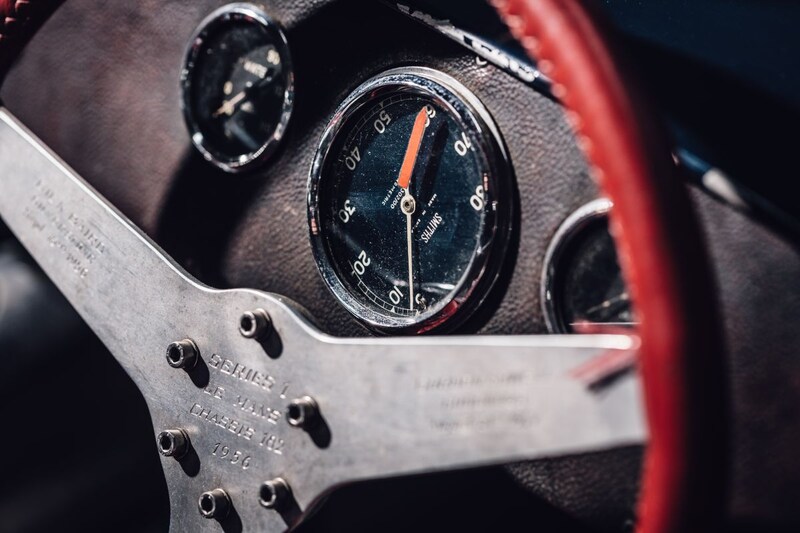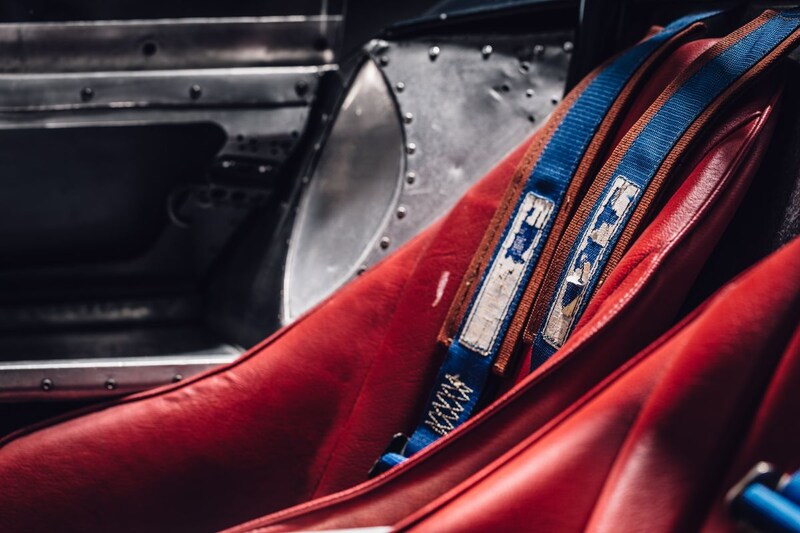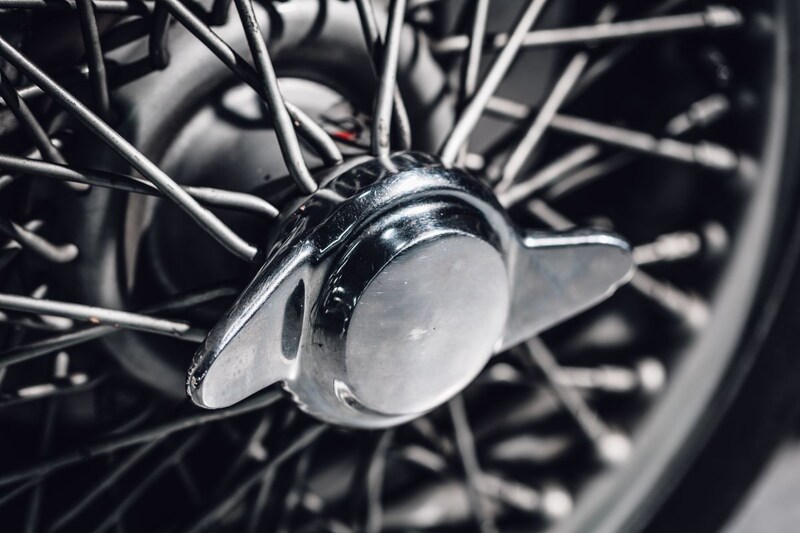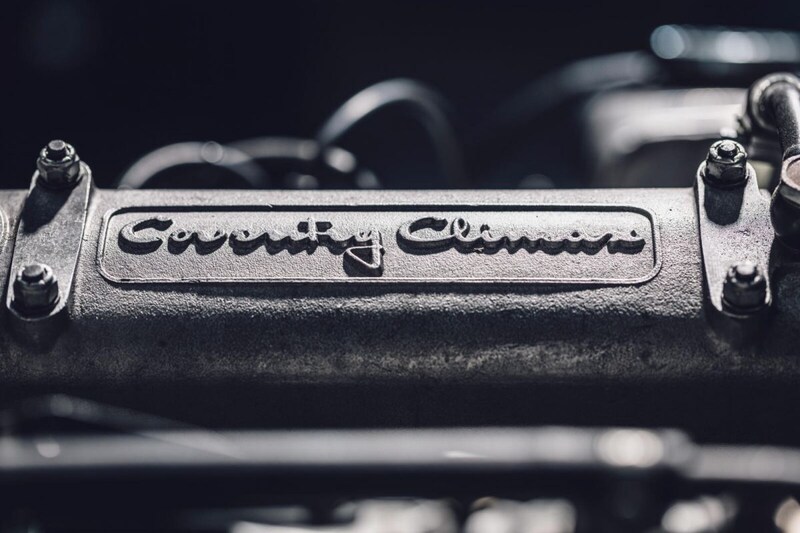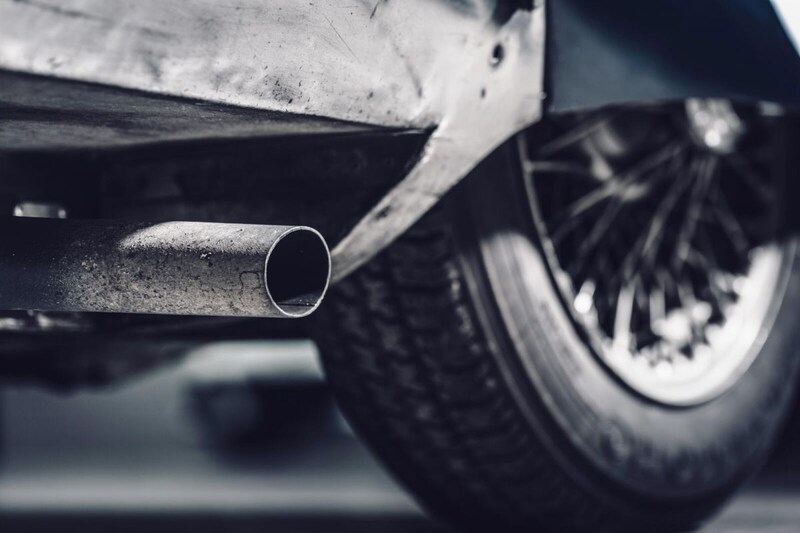Without the XI (or Eleven), Lotus would probably never have reached the highest echelons of motorsport. In fact, the British sports car brand probably wouldn’t have even got off the ground in the 1950s. But a special racing car with a minimal engine put the niche manufacturer on the map in one fell swoop. The success of the Eleven not only prompted Colin Chapman to start the names of all subsequent road cars with an E (such as the Elite and the Esprit), but even stimulated the contemporary Lotus to continue the XI. history.
The British sports car brand’s annals would not be so rich if the Seven had not been joined by the Eleven, the most successful race car Lotus has ever conceived. Chapman had been brooding on the project for a while until he was able to convince his best people in the mid-1950s to work some overtime. Frank Costin, an aerodynamics specialist who had already joined the brand at the time of the Mark VIII, designed a body with an extremely low drag coefficient, while Chapman took care of the tubular frame. That eventually came to less than 35 kg, so you could just lift it over your head, a statement that Chapman has had more than once immortalized in photos.

By covering the space frame with aluminum from the aerospace industry, the end product weighed barely 450 kilos, including liquids. Fat engines were therefore out of the question; on the one hand because they would upset the delicate balance, on the other because the XI with 1.1 liters was fast enough to dominate its class. In fact, the batmobile also took the podium in the 1.5-litre, while the model was competitive even in the two-litre. The original FWA engine, a 1098cc small four-cylinder with a single overhead camshaft, came from Coventry Climax, a British company that produced everything from forklifts to racing motorcycles. But that was by no means the only engine supplier. Chapman specialized in reusing discarded parts that he could find cheaply at demolition dealers. For example, the Spartan XI would contain parts from Austin, BMC, Ford, MG and Morris, among others.
The aluminum body was beaten by hand by neighboring Williams & Pritchard. Depending on the specification chosen (Lotus offered a Club version and a Le Mans model) you got drum brakes and a rigid rear axle or front disc brakes with a De Dion-type swingarm. There were hardly any external differences, although there was still a Sports version with a Ford 10 engine. And while we’re on the subject of the guts: in addition to the Coventry Climax and the Ford 10, many other engines were used, ranging from small 750 and 850 cc blocks from Saab via one-litre engines from DKW to the 1.5-litre engine from Saab. Maserati. By the way, the engine was part of the chassis (as a so-called ‘stressed member’), because Chapman was convinced that each part should have at least two functions in order to save weight. Under the well-known motto ‘simplify, then add lightness’.

success story
Between 1956 and 1958, about 270 Elevens rolled out of the converted stables behind the Railway Hotel in North London. The first 150 were Series I models, followed in the spring of 1957 by an updated Series II which was quickly renamed Lotus XIII among connoisseurs. Chapman had left that Roman numeral open out of superstition, and it was soon confiscated by Series II supporters. This variant mainly distinguished itself from its predecessor under the skin, with a better front suspension for more consistent handling. Furthermore, the chassis was also reinforced and the powertrain strengthened, to facilitate the mounting of more powerful engines. An option that some American Chrysler engineers eagerly take advantage of by mounting a six-cylinder Valiant under the Costin hood, good for a top speed of more than 275 km/h.
Because if the XI excelled anywhere, it was on the track. Steve McQueen even traded his Porsche Speedster for a sleek Lotus because the model’s podium finishes were unmatchable. In 1956 alone, the Eleven would win 148 races, with a class win at Le Mans at the very top, which was good for seventh overall. The success story continued in 1957 with an 11th place in the Mille Migla, while the Weiss and Tallaksen car finished fourth at Sebring in 1958. In the meantime Stirling Moss and ‘Mac’ Fraser had made a record attempt at Monza which once again set numerous records, including an average of 217.26 km/h over 100 kilometers. Although the record car was extra streamlined before that with a canopy above the pilot.
And so it happened that the small constructor from the south of England was suddenly on the world map, as ‘serious maker of competition cars’ as the tabloids headlined at the time. Reason enough for Colin Chapman to start nurturing Formula 1 ambitions, even if they initially resulted in the imperfect single-seater Lotus XII. It would take until 1962 before the Eleven got a worthy successor in the form of the Lotus 23; an open two-seater intended for Group 4 racing. The Formula 1 dream finally came true with the Lotus 25, accounting for 14 GP wins with Jim Clark at the wheel. It didn’t matter to anyone that Chapman was already known as a fanatic who often put his technical ingenuity above the safety of his pilots.

patina
“I wouldn’t want to race with it for anything in the world”, sneezes the Lotus Antwerp mechanic, while we take a closer look at the deep blue Series I. In terms of ambiguity, a nice statement, since today you have to pay a lot of euros to be able to risk your life in an Eleven. Typical examples start at a ton, while a documented racing history easily doubles that amount. Our fashion model picked up the black and white checkered at Silverstone in 1956 with Gil K. Baird at the wheel. A year later Gordon Fowell repeated that feat to Goodwood. With that you immediately know that this is an early Le Mans version, although the production number 182 insinuates otherwise. Turns out Chapman didn’t start counting until 151, for whatever reason. The disc brakes on the front wheels and the fact that the Le Mans version lacks a headrest and has the further characteristics of the racing version – above all, it takes the adjective spartan to new heights.
To describe the Lotus XI as stripped-down is therefore an understatement. Just look at the cockpit, which contains barely more than two racing fairings and a wafer-thin handlebar. The gearshift of the four-speed manual is equally delicate, while the dashboard consists of a scant mix of Smiths counters and weathered knobs. Of course therein lies the beauty. Everything on an Eleven is functional, including the metal flaps that connect the plastic side windows to the ditto windscreen. Getting in is, as still with Lotuses, an exercise in agility, all the more so because the doors simply fold down to make the sills of the chassis look even wider. Simply standing with your foot on the seat of the chair is therefore the only way to get into it.
Because the tires are so narrow all around (size 125 on a 15-inch spoke rim), the steering is even light when stationary. Maneuvering the XI in front of the camera doesn’t take the slightest effort, it rolls so lightly. Moreover, OEA 272 is anything but a garage princess. Rather a well used club racer with a lovely patina that is reflected in peeling paint on the hood and numerous dents. The icing on the cake is the weathered Lotus badge, which proudly wears its 60 solstices. Underneath is an original Coventry Climax engine, which has been tilted ten degrees to keep the hood as low as possible. The whole thing breathes through twin Webers and is said to produce 75 horses for an impressive performance ratio of 166 horsepower per tonne. This means that even the basic motorization is able to clock 100 km/h in 8 seconds and continue to 200 km/h. And that for 1956!
bravery pills
Today, the Eleven is widely regarded as one of the most beautiful racing cars in history. Some even consider it the most beautiful racer of all time, because the physics-dominated body is just so special with its overhanging wheel arches and voluptuous curves. By the way, did you know that the molds of the XI have been owned by British kit car builder Westfield since 1983? And that it now and then produces a batch of Elevens in parts for a unit price of less than €15,000? All that remains is to find a suitable engine and someone who can assemble the whole according to the rules of the art. Because the box of bravery pills, you get that for free and for nothing.
Modern Tributes

The 2-Eleven came on the market in 2007 and was actually a stripped-down version of the then Exige S, the coupé variant of the open Elise. With the difference that the 2-Eleven, completely in line with the original XI, had no roof or windscreen to only come out at 670 kg. Combined with a Toyota-made 255 hp 1.8-litre four-cylinder supercharged supercharger, this proved to be good for a classic sprint in less than four seconds and a top speed of 241 km/h. The icing on the cake was the fact that you could have the 2-Eleven factory registered, at least in England.

Since the beginning of 2016, the 3-Eleven has been a fact, an even faster variant based on the current Exige S, again without a roof or doors. However, this variant does have a mini windscreen, because the top speed is 290 km/h. Just like in the donor car, there is a 3.5 liter V6 with 465 hp in the middle of the chassis. And that in a body that weighs 890 kg! The result is a 0 to 96 km/h time of just 2.9 seconds, thanks in part to the use of a sequential six-speed gearbox. The street version, which weighs a little more and has a little less power, still does that sprint in an unbelievable 3.3 seconds.
This article originally appeared in AutoWeek Classics issue 5 of 2016.
– Thanks for information from Autoweek.nl


